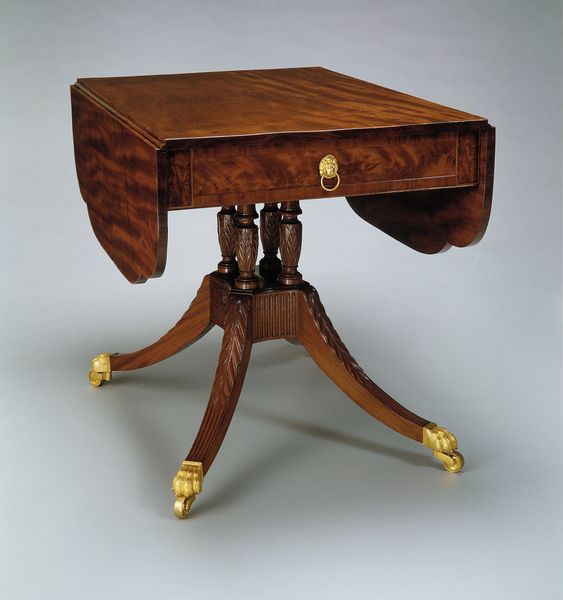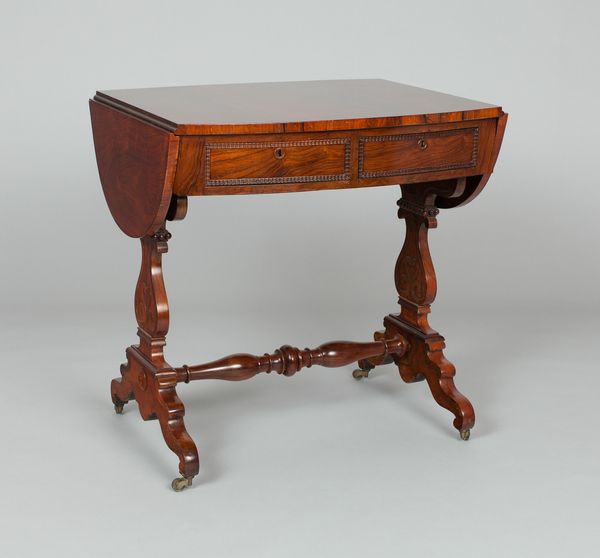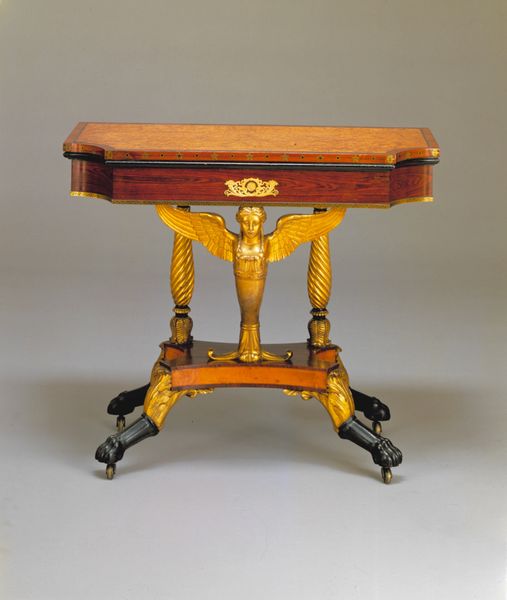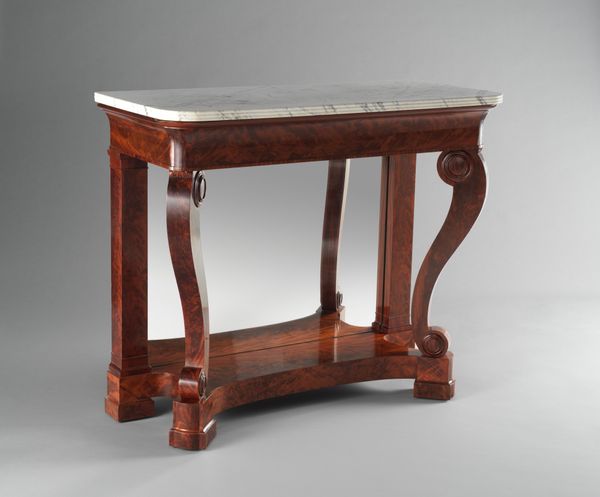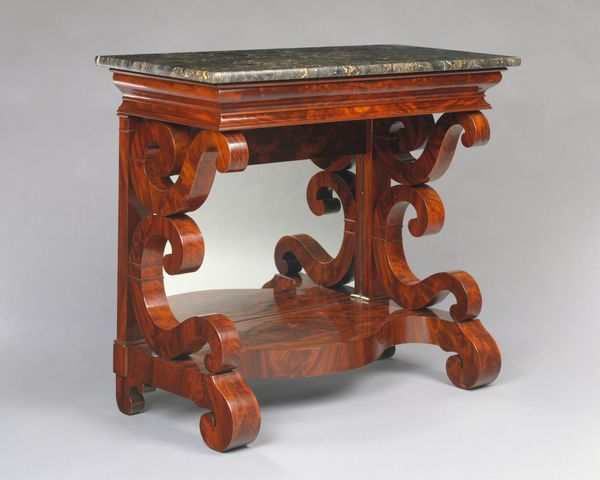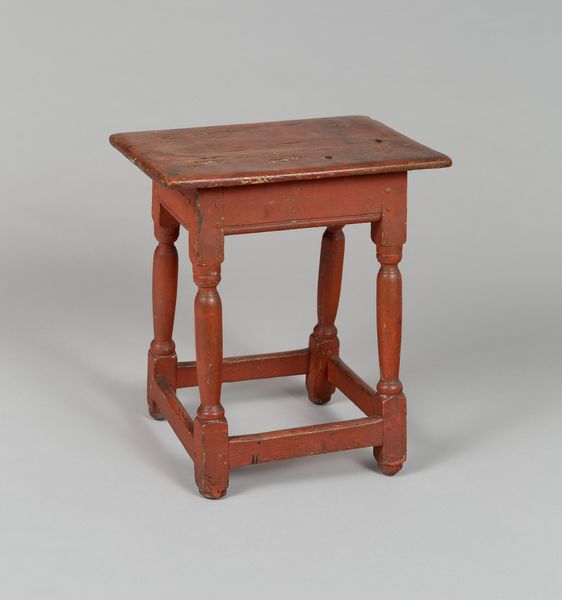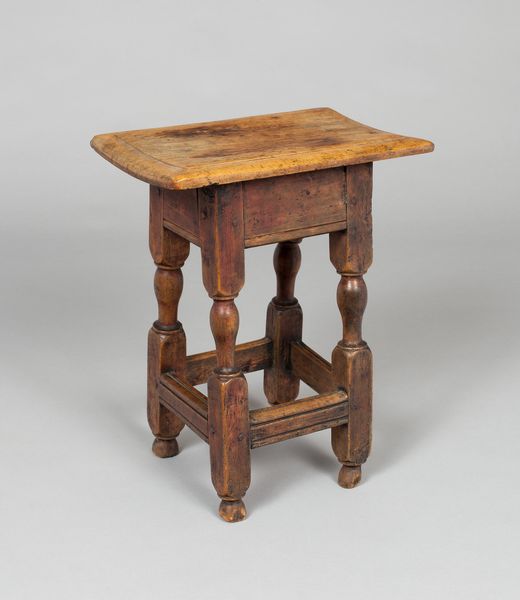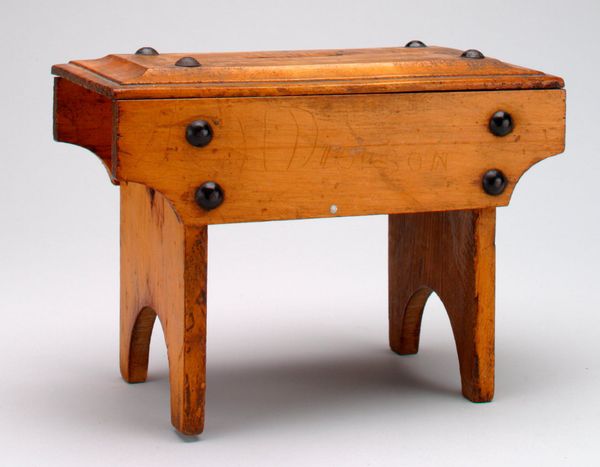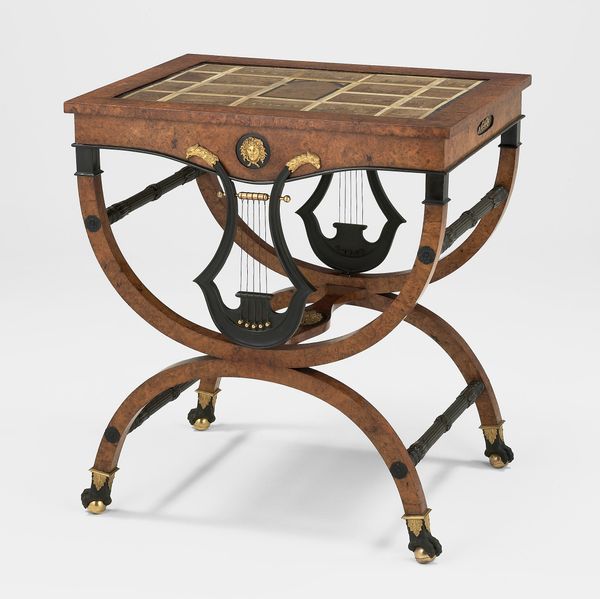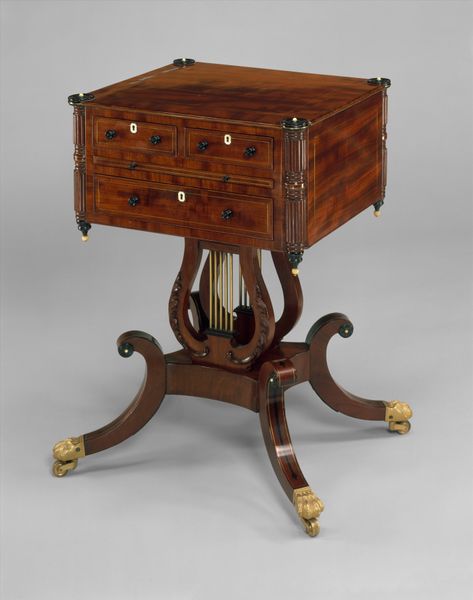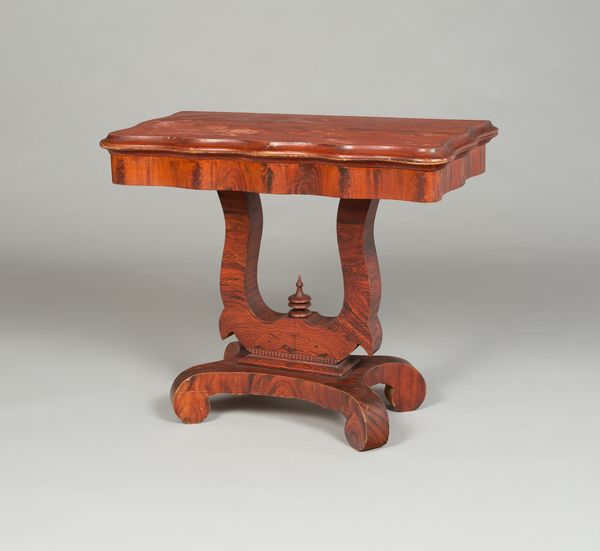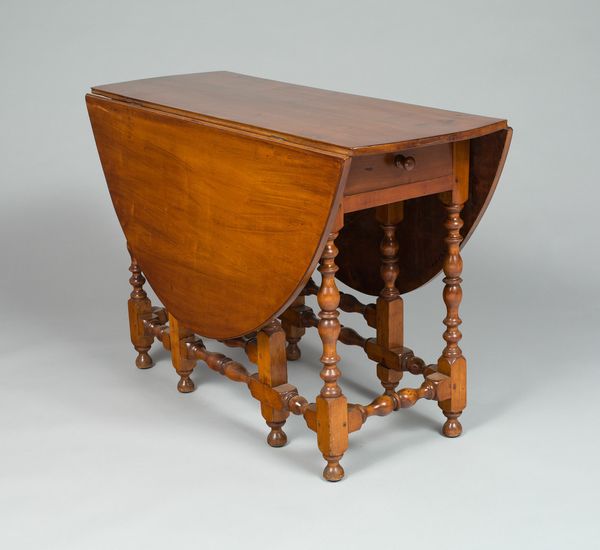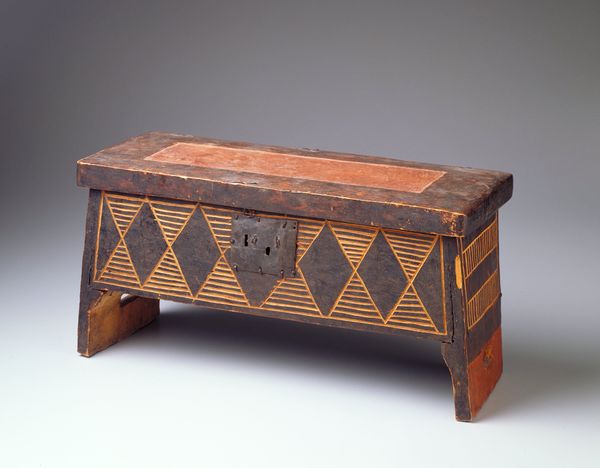
Dimensions: 29 1/4 x 36 x 17 3/4 in. (74.3 x 91.44 x 45.09 cm) (folded)
Copyright: Public Domain
Curator: What a peculiar little piece! It's got this... grave elegance, I suppose you'd call it? Editor: Indeed. This card table, crafted around 1865, hails from the workshop of William Burges and now resides here at the Minneapolis Institute of Art. A testament to the Arts and Crafts movement using wood, its surface tells a story through both carving and detailed geometric arrangement. Curator: That geometry definitely grabs you. I see playing card suits—hearts, diamonds, spades, clubs—running along the apron. Almost feels like the table itself is daring you to a game. A memento mori, perhaps? Each suit a symbol for a specific destiny? Editor: Perhaps it signals not only the frivolousness of a card game but the gamble of human interactions generally. And the surface… note how it divides the checkered pattern from a pattern more floral—nature versus constructed society reflected within one bounded field of play. Curator: The base seems almost gothic, in a way. A lot of detailed little faces, and the arches around each table leg makes it almost a little chapel. A cathedral for the cards. The artist probably played himself, yes? And I love the dark hue and that the structure has the symbols within, too! It isn't just applied but inherent. Editor: Possibly, though to a formalist the key element remains the synthesis. These stylistic components coalesce into something self-referential, less focused on external play than its inherent design grammar. Consider how the verticality of the supports echoes, in miniature, architectural grandeur. Curator: Well, that's fair. Perhaps the message lies within the juxtaposition itself: gothic piety supporting something as worldly as a game of chance. Quite the statement, isn't it? A beautiful little paradox to ponder over. Editor: It certainly is a rewarding study in tensions—a small stage set where aesthetic form plays its most engaging game of all.
